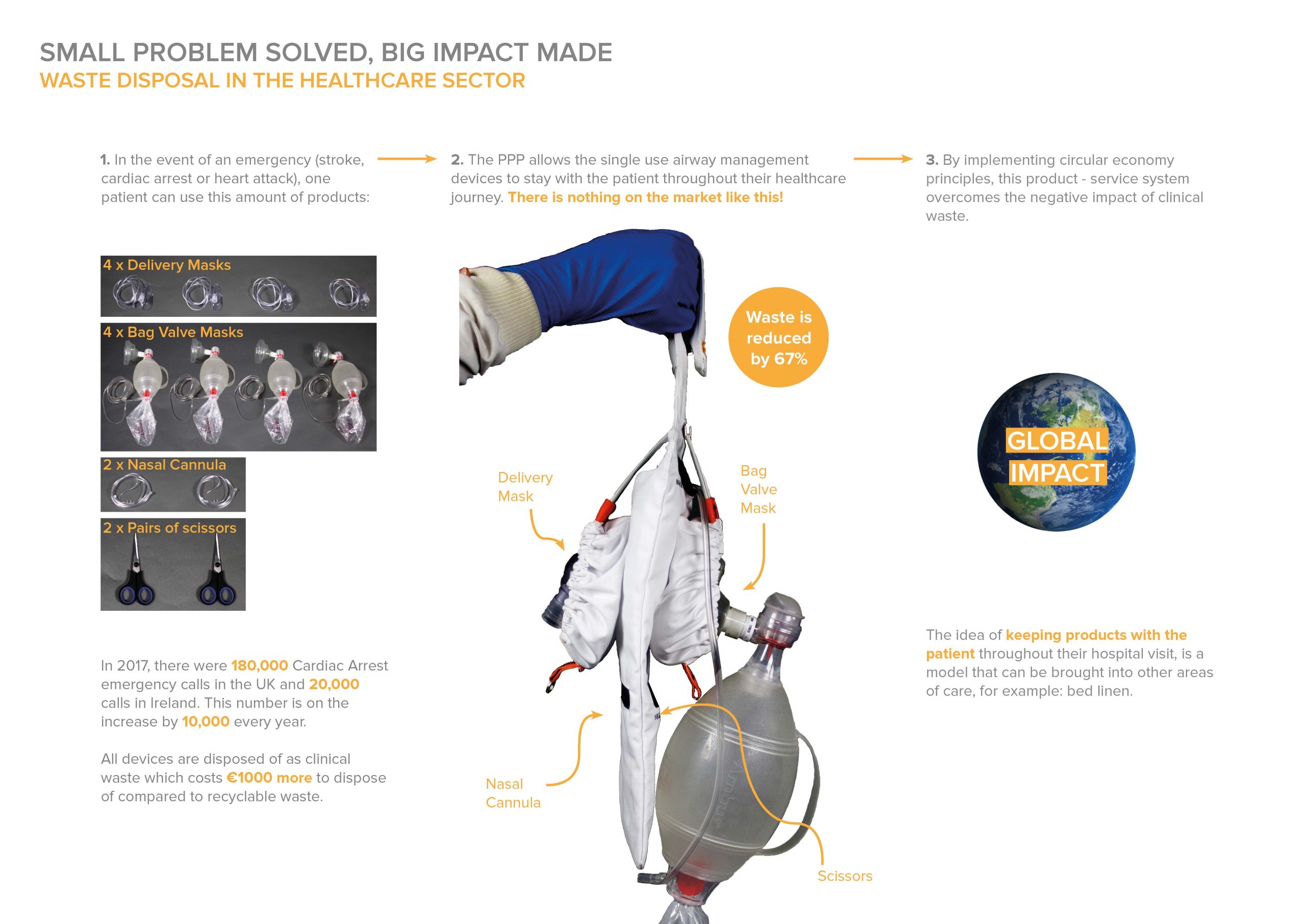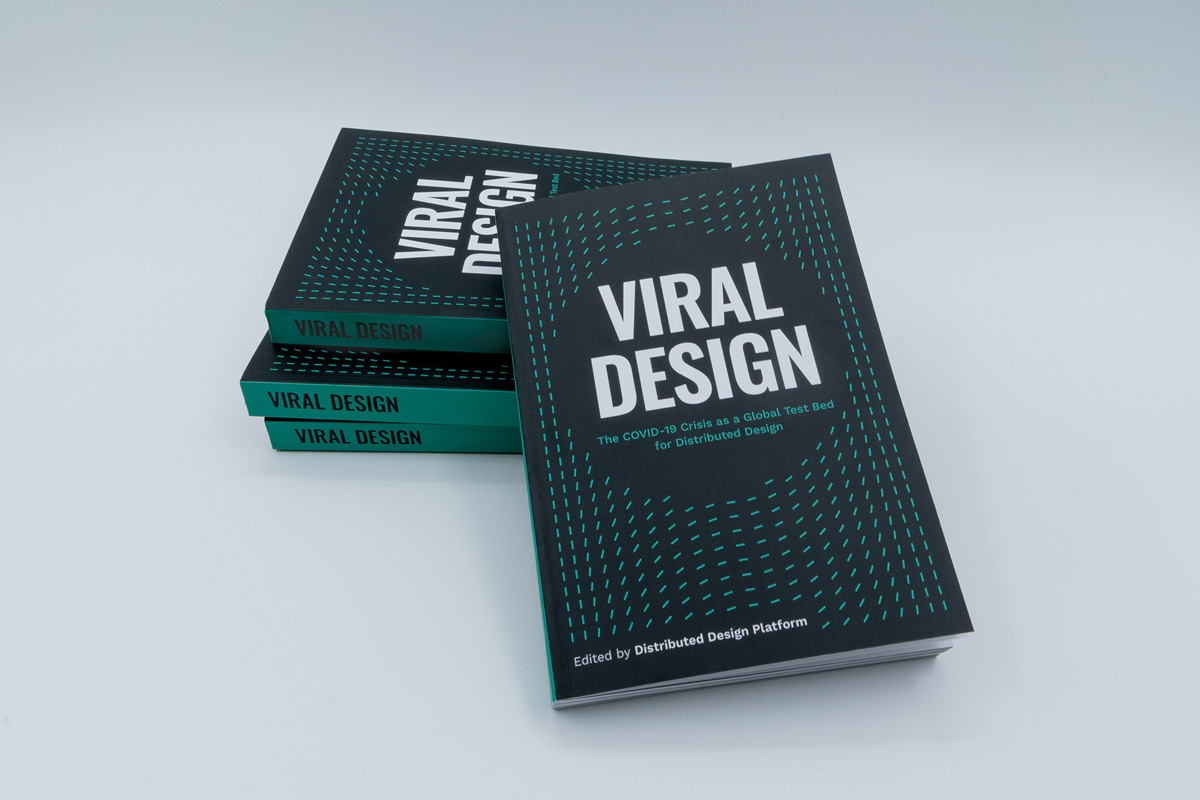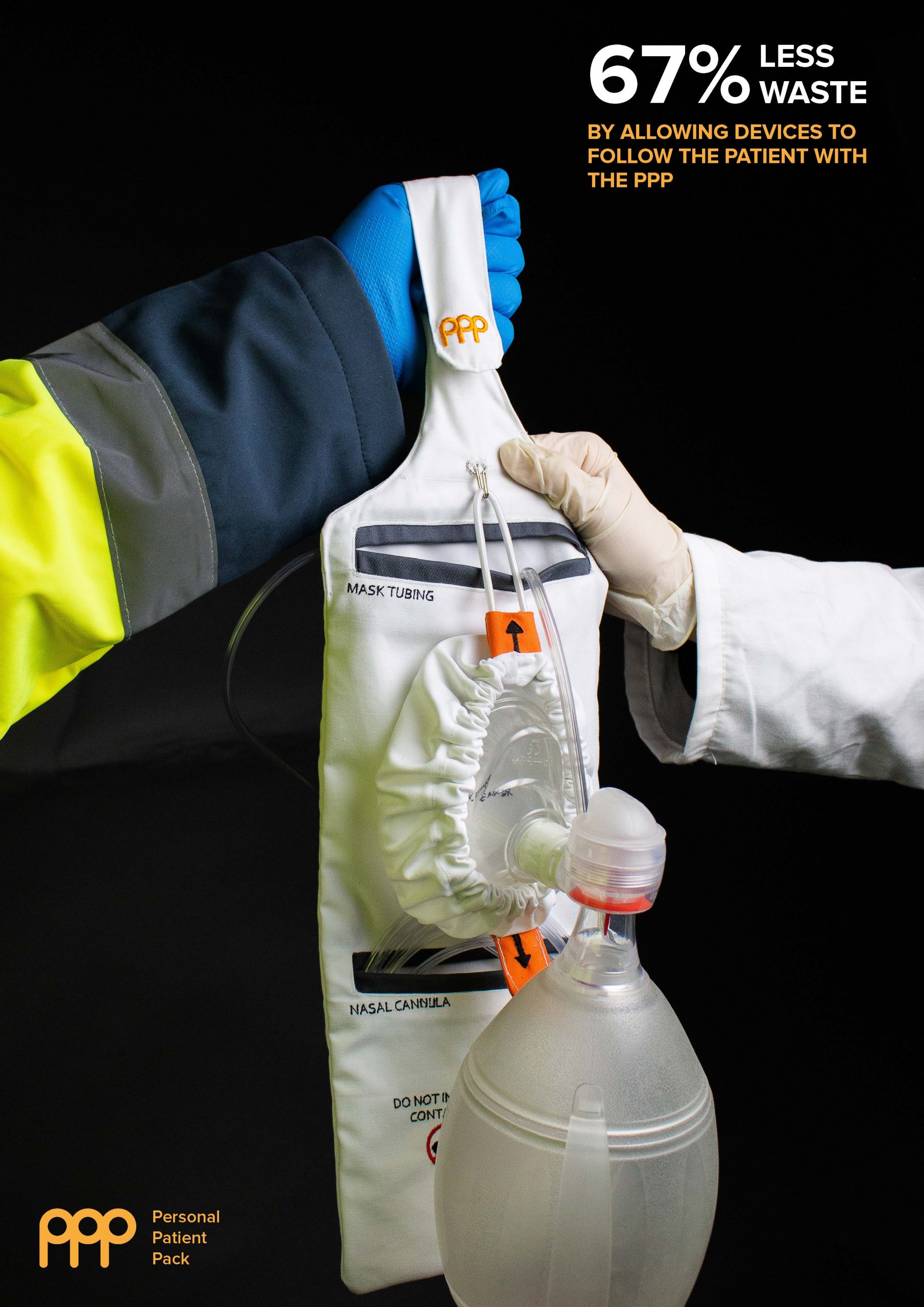This is a case study about the winners of the “Design for Emergency” category of the Distributed Design Awards 2020— Hannah Grogan and Máire Kane with their Personal Patient Pack. The Personal Patient Pack reimagines health and emergency care in hospitals, factoring in the circular economy in the design process. This design allows medical equipment and digital records to travel with the patient, reducing the overall single-use plastic waste produced by sixty-seven percent per case.
How Do We Design for Emergency?
From previous experience working in medical design firms, Hannah and Máire became actively aware of how medical devices are most commonly designed without the vision of sustainability in mind. The pair recognised an opportunity in the redesign of healthcare, in which design can play a role in factoring in sustainability, whilst medical professionals can remain focussed on the most important goal — the health of the patient.
“Saving a patient’s life comes first over the sustainability of medical devices being used.” (Taken from an interview by Hannah and Máire with a healthcare nurse in Dublin).
This design aims to target healthcare bodies and instigate more sustainable choices and options to create positive environmental change in the realm of emergency medical care. Hannah and Máire began the project with the initial aim of applying circular design principles to emergency medical care. During their research, it became evident that an airway management scenario produces a large amount of clinical waste. This waste majorly consists of single-use devices which are then sent for incineration.
In the event of an emergency— such as a stroke, cardiac arrest or a heart attack, a single patient can use up to four delivery masks, four bag valve masks, two nasal cannulas and two pairs of scissors. The cost of disposing of these items is one thousand euros more than disposing of recyclable waste. For these reasons, the pair designed the Personal Patient Pack.
The Winning Design— the Personal Patient Pack
The Personal Patient Pack (PPP) is designed to move with the patient between areas, so that the equipment safely travels with the patient, rather than new equipment being used and thrown away each time. This reduces single-use waste by sixty-seven percent per patient.
The PPP is made from a polycotton material with embroidery labelling which has the potential to be laundered for over 100 cycles. The design can be produced without adhesives or plastics, which means that the pack can easily be disassembled and recycled at the end of its lifecycle.
The pack is designed for airway management use— it holds a resuscitation device consisting of a delivery mask, a bag valve mask, scissors and a nasal cannula— the products which were recognised as producing the most waste during their lifecycle. Further, the PPP is equipped with radio-frequency identification (RFID) technology, which can hold a digital patient medical record and allows for traceability at all times. This design specifically concerns that of holding emergency airway management equipment, however, the concept of keeping products with their patients throughout their hospital visit could also be used as a model in other areas of care, for example, with the bed linen.
Reimagining Healthcare with the Circular Economy
The design of the PPP highlights how design can facilitate and introduce sustainable perspectives into the medical industry. Design perspectives allow medical professionals to keep the health of the patient as their first priority, whilst intelligently designed equipment and services can promote sustainable practices and closed-loop cycles.
There are four key areas in which this product can offer solutions. Hospitals and ambulance services will economically benefit from the reduction in the volume of clinical waste sent for incineration. The lifecycle of the products are hugely extended— this pack remains with the patient, which means that the products and materials are utilised to the maximum until the end of the patient’s healthcare journey. Digitalising patients records can make for more streamlined service and ensure the data is kept with the patient at all times.
The PPP has sparked wider conversations of how circular economy principles can be integrated into healthcare systems. In 2019, Hannah and Máire were invited to the Ellen MacArthur Foundation on the Isle of Wight to present the PPP at the Disruptive Innovation Festival.
The PPP embodies the principles of Distributed Design. The pack includes the users throughout the design process and acknowledges the much wider scope of the product life cycle and how this fits into hospital supply chains. The design is sensitive and coherent for medical users, acknowledging the potential for further scope in other areas of healthcare and medical design whilst ensuring the health of the patient but also, the health of the planet in the process.

We Interviewed the Designers Behind the Winning Project
Can you describe the personal patient pack in one sentence?
The ‘Personal Patient Pack’ is a product service system which allows single use devices to follow the patient throughout their healthcare journey and on average, reduces waste by 67%.
Why do you think your design field matters now more than ever?
During the COVID-19 pandemic, we have realised how crucial medical device design really is. This is evident with open source projects like the Open Sourced Ventilator project (OSV) in Ireland. As designers, we are used to working in teams to solve problems whilst reaching out to others who know more. As medical device Designers, we have learned to think in a proactive, creative manner while complying with regulations, market needs, user needs and key insights.
The design and development of a medical device is the most crucial phase for its success. From recently finishing an MSc in Medical device design we realise that a loosely defined medical device, will not make it to market.
How has COVID-19 affected, shaped, or evolved your practice?
With the recent lockdown, we have learned to work from home freely on our own. For our final Masters projects, both projects completed by Máire and Hannah were tackling the challenge of helping to overcome the pandemic from the healthcare perspective. We had no choice but to learn how to design in and for a crisis environment. Being able to connect via video calls has been an amazing resource for us and meant that we could interact with people who may not have agreed / had time to meet in person.
Why is it so important that we put sustainability in the line of thinking when we design medical healthcare devices?
There are many sectors where product life extension can be a challenge, such as for some products in the healthcare sector, where infection control is a priority. Recycling or incineration is currently a go – to solution – making the chances of contamination low.
If sustainability design principles are implemented at an early stage in the medical device development, it can really solve huge sustainability issues at the user end.
Medical device designers have the responsibility to know how to design for sustainability and to always question how products are currently being designed, manufactured and implemented.
It is vitally important that this teaching is brought into the university level education system, so this mindset is instilled at an early stage in one’s career.
The Personal Patient Pack utilises this thinking and highlights that when coordinated with already-existing cleaning systems, it is possible to re-design single use healthcare products into multi-use ones, reducing the amount of waste produced per patient or treatment.
What’s next for your design practice?
Designing for the circular economy is a complex phenomenon which requires the adaptation of existing systems and the implementation of new ones. It is so important to look holistically at these sustainability problems in order to make real change in the area.
Being young, female entrepreneurs in the medical device design field is relatively unheard of. We have the ability to approach problems in a new and creative way by pushing the boundaries of what’s possible. This project has shown us that if we put our minds to it, we can really make a change in the sector so this is only the beginning for us.
In our experience to date, Máire and I have learned that some medical design companies can sometimes on occasion, lack the personal understanding required to design for a specific need. It is time to consider the minorities in our society by implementing solutions through design! The process of engaging with users and uncovering their life struggles can be challenging on many levels but especially when finding a way to positively impact their life, it can be the most rewarding and satisfying feeling! Being able to apply this empathy in our careers is one of our core values as designers.


